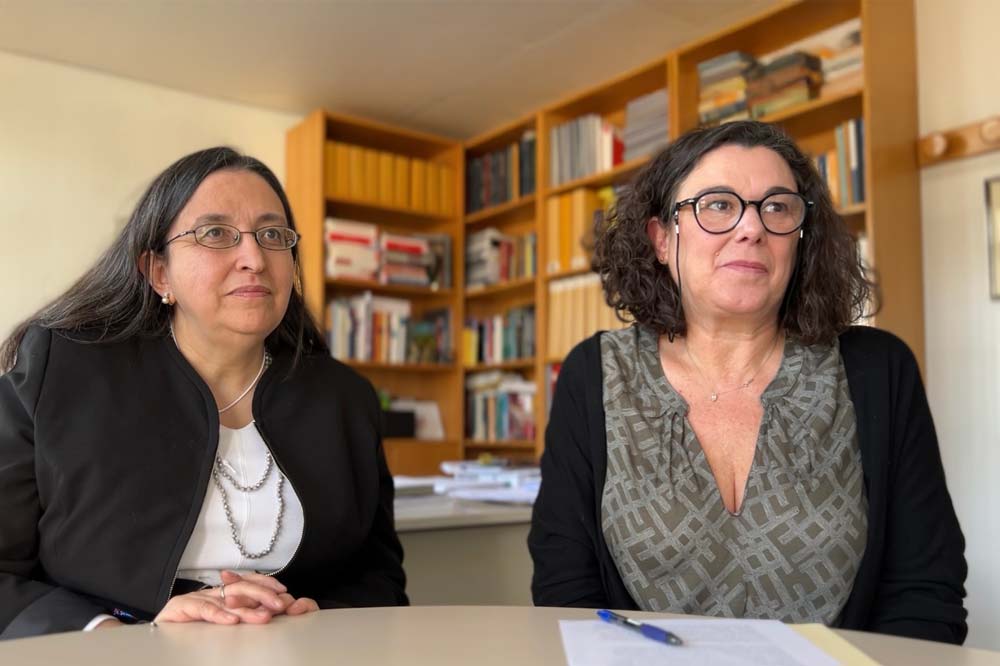
Catalina Bolancé i Montserrat Guillén “Our predictive model helped prevent the saturation of hospitals in Catalonia”
(Year 2023)
Dr Catalina Bolancé and Dr Montserrat Guillén are professors in the Faculty of Economics and Business at the University of Barcelona. During the COVID-19 pandemic, they developed a predictive model that was transcendental in keeping hospitals all over Catalonia from collapse.
Can you tell us about the project you were working on?
The project aimed to provide daily predictions on hospital bed occupancy due to COVID-19 in the Intensive Care Unit (ICU) and on other wards. It predicted the most likely scenario for one to two weeks ahead. Plus, on a daily basis, it predicted the number of days before the hospital was once again at maximum occupancy. So, in a way, the goal was to predict the critical moment of saturation. These predictions were obtained globally for all of Catalonia and individually for each healthcare region.
How did you precisely predict the number of beds available?
Using dynamic prediction models with the R programming language, we designed programs that allowed us to load the data we received daily from the Catalan Ministry of Health. The data included information on healthcare activities the previous day on all levels, from primary care and primary urgent care centres to all the hospitals, taking into account the patients with positive PCR tests that sought urgent care. At the same time, there was a daily count of occupied standard and ICU beds at each hospital in Catalonia. The estimates and projections were updated daily, and a qualitative assessment was made to help healthcare authorities assess the situation and anticipated evolution. The dashboard allowed us to build scenarios of growing numbers of cases and the impact on hospitalisations.
So, the system was transcendental in allowing the authorities to take the right measures and prevent saturation of the hospitals.
It was a system that the committees of experts and authorities could interpret easily, which facilitated decision-making based on anticipating the chance of hospital saturation globally and by healthcare region. At the worst moments, before the vaccine or before it had been rolled out to the whole population, it helped for making social distancing recommendations and restricting activities, which prevented the hospitals in Catalonia from becoming saturated, which did happen in some places.
What sets your project apart?
One of the differential aspects is the use of predictive statistical modelling on aggregated and disaggregated levels during a pandemic. The intense work it took was also remarkable. We never missed a single daily report on the evolution of the situation. Not on holidays, not for any reason. We had never seen this intensity and personal dedication from the researchers before. The process couldn’t be completely automatic because the changing variants of the virus and the dynamics of society itself meant that the spread wasn’t stable, nor did it follow a steady epidemiological pattern over time.
What factors impacted the predictions?
Every day, the projection was recalculated taking into account factors like the day of the week, any holidays, activity at primary care centres, population vaccination levels and access to urgent care. Using information from COVID-related calls to the 061 emergency line, we also managed to set up one of the most advanced systems in the world for anticipating saturation. And, as we’ve said, our reward was that, by working together, we prevented our healthcare system from collapsing.
Where could this technology be applied?
It was designed to monitor hospital occupancy and to get ahead of possible saturation in an ever-changing environment. The pandemic meant the projections had to be updated very quickly, looking more at what was going to happen than what had happened, which is the more conventional view and what was seen most in the media during the pandemic. This applies to any hospital or supply-logistics system when capacity is limited.
Why is it important to monitor hospital bed occupancy?
Because the lack of beds is a problem, first of all, for patients and their families, who have to experience the uncertainty of possibly not having a place. And secondly, for the healthcare professionals themselves, who can only care for so many patients at a time. In Catalonia, we didn’t have to use provisional facilities, like field hospitals, which don’t have the same options as permanent centres.
Where is the project at now?
The project is finished, as of late 2022, when we saw that the COVID-19 pandemic was hardly affecting hospital occupancy in Catalonia any more.
More about Dr Catalina Bolance and Dr Montserrat Guillén
The best invention in history?
Dr Bolancé: Internet
Dr Guillén: The washing machine
What would you like to see in the future?
Dr Bolancé: Simultaneous translation
Dr Guillén: Teleportation
A future breakthrough that scares you?
That you could be talking to a robot and think it is a person.
Someone you admire?
Dr Bolancé: Gauss or Pearson
Dr Guillén: Mother Teresa
Transfer is important for…
Advancing. The world to change, and for that to lead to greater well-being for the people.

